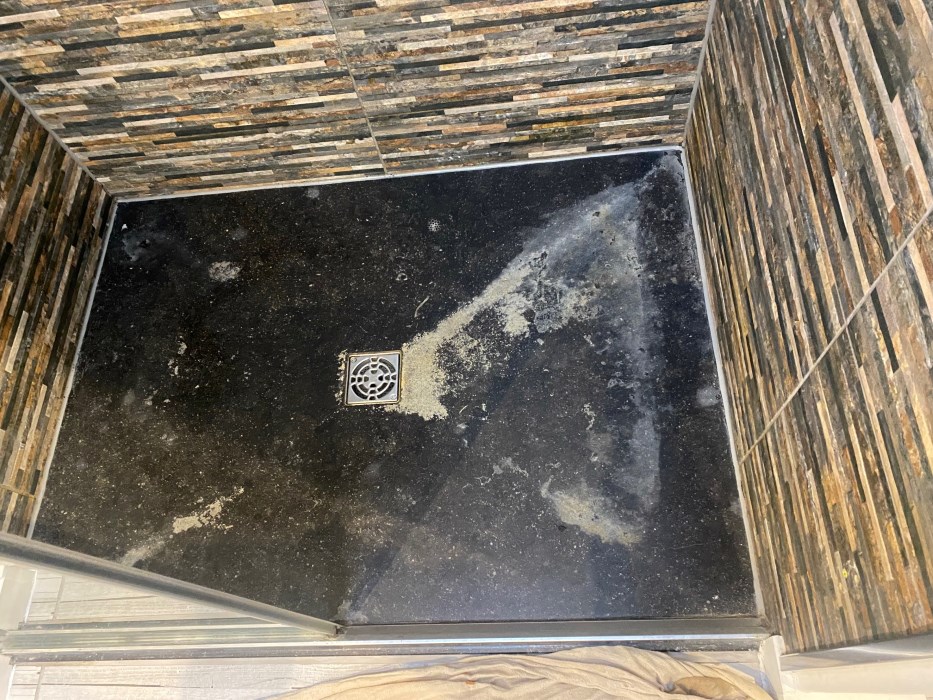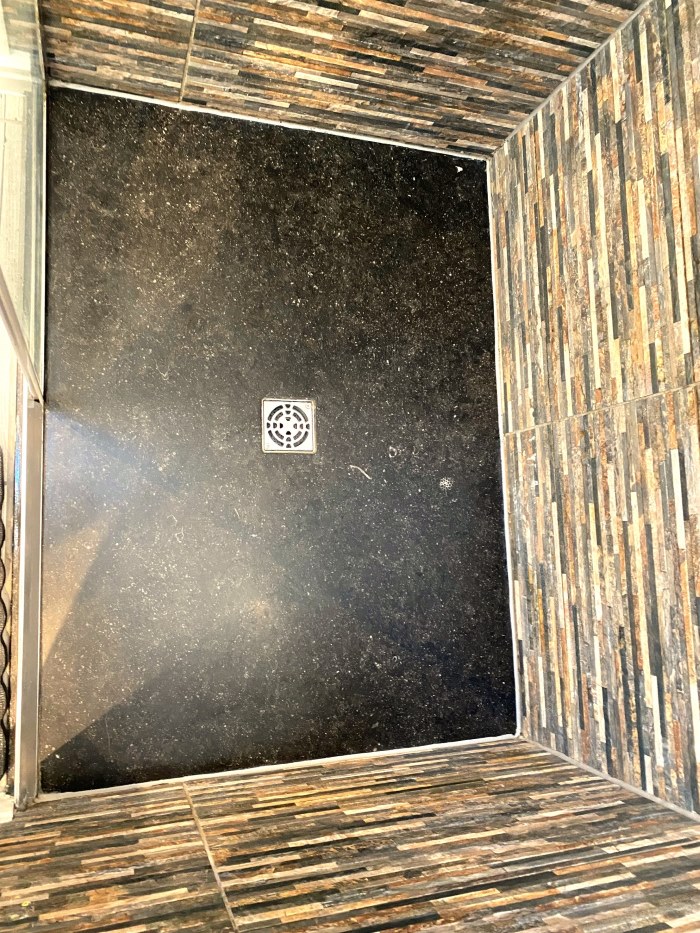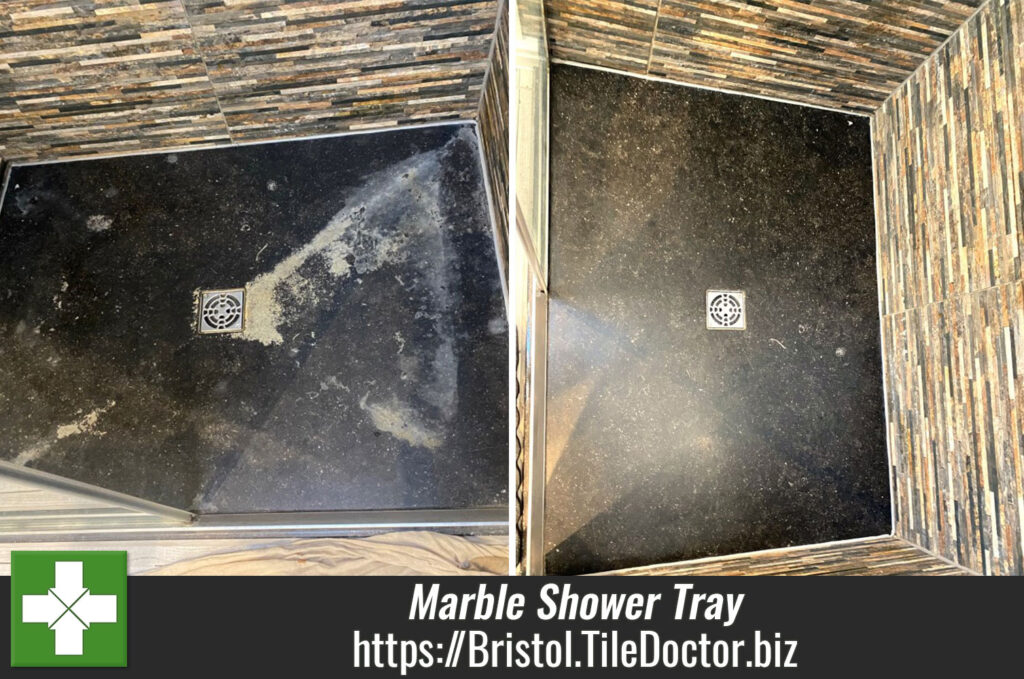The owner of a high-end apartment in Bristol City Centre called us in to take a look at a black marble shower tray in their ensuite bathroom. The marble was stained with years of use and realising they had to be careful how it was cleaned decided to call in Tile Doctor.

Marble is a metamorphic rock and as such is acid sensitive, Marble is really just a denser version of Limestone but it’s still sensitive. Most don’t realise this but there are lots of acids in use in the home, especially so in a bathroom where its prevalent in soaps, shampoos and body washes. Once used these really need to be washed away from sensitive surfaces with lots of water.
Even the glass in the shower doors can be affected by acids as can the grout lines and silicone sealer. Although the acids used in these products are weak and designated safe for the human skin, long term use can cause the staining which you will see on the before picture on this post.
Cleaning a Polished Marble Black Shower Tray
I was able to rectify the problem using a set of 6-inch diamond burnishing pads fitted to a handheld polishing machine. No other products are required as the pads are applied using water to help lubricate the process.
The cleaning started with the application of a coarse 400-grit burnishing pad which deep cleans and re-surfaces the stone to remove etching and other stains. The soiling generated is then rinsed off and the pad is changed to the 800 and then 1500 grit using the same process. This action refines the surface and then re-builds the polish on the exterior.
The marble was then dried with a heat gun, and the process repeated using a very fine 3000-grit pad. This last pad is applied dry with just a squirt of water from a spray bottle where needed and results in a deeper shine.
Sealing a Polished Marble Black Shower Tray
The polished marble was then sealed to protect it and keep dirt on the surface where its easily cleaned away. I chose to use Tile Doctor X-Tra Seal for this as its oil based and it’s the oil that restores the dark tones to the stone, it is also rated for external use, so it is ideal for wet areas.
This sealer does have a caveat however, it needs to be polished in well after it’s been applied, otherwise the oil base wicks up and it can turn tacky, or slippery if not polished off well enough, only one coat is needed.

The client was very happy with the finish, in fact they made a comment that it never looked this good when it was installed three years ago. We get this comment a lot and we think it’s down to the fact that the installers do not have enough experience with the application of sealers or in fact choosing the right sealer for the job.
For aftercare I recommended they spray on Tile Doctor Aqua-Pro after showering, it’s a mild alkaline shower cleaner that’s ideal for use with sealed stone.


Tile Doctor have a comprehensive range of sealers that cover all types of finish and situations; before having your tile or stone sealed its worth contacting Tile Doctor for advice and to ensure your using the right sealer for your requirements.